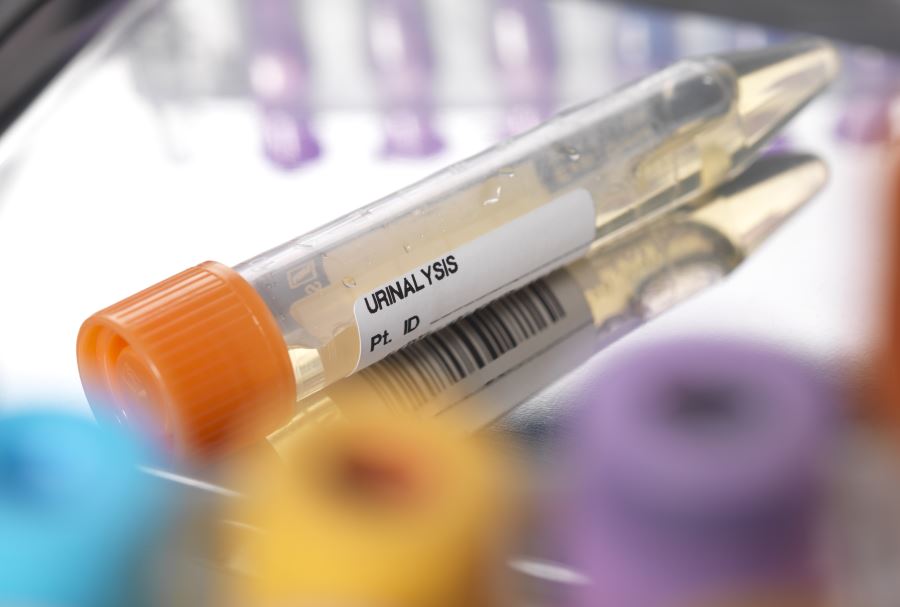Have you ever wondered what secrets your urine can reveal? Beyond simply confirming a bladder infection, a urine test can be a powerful diagnostic tool, offering a glimpse into your overall health and potentially uncovering hidden conditions. A urinalysis complete with reflex to culture, as the name suggests, goes beyond a basic analysis, diving deeper to identify the presence of bacteria and provide crucial information about its potential for infection.

Image: www.dlolab.com
Urinalysis, a fundamental test in medical diagnostics, involves examining the physical and chemical properties of urine. This non-invasive procedure provides a window into your internal environment, revealing clues about your body’s health and function. But when the results suggest a potential bacterial infection, the “reflex to culture” comes into play. This crucial step involves sending a urine sample to a laboratory for further analysis, cultivating bacterial colonies to identify the specific culprit and determine its susceptibility to antibiotics. This comprehensive approach is essential for accurate diagnosis and appropriate treatment, ensuring a targeted approach to combat infection.
What Does a Urinalysis Reveal?
A standard urinalysis provides several insights into your health. Here’s a breakdown of what it encompasses:
1. Physical Examination:
- Color: The color of your urine can indicate hydration levels, potential liver problems, or the presence of certain medications. Normal urine ranges from pale yellow to amber.
- Clarity: Clear urine is ideal, while cloudy urine can suggest infection or the presence of blood, protein, or other substances.
- Specific Gravity: A measure of the concentration of dissolved solids in your urine, reflecting your hydration status.
- Odor: While a slight odor is normal, a strong or unusual smell can point towards certain conditions.
2. Chemical Examination:
- pH: The acidity or alkalinity of your urine can be influenced by diet, medications, and underlying medical conditions.
- Protein: A normal urinalysis should not contain protein. If present, it can indicate kidney problems, high blood pressure, or urinary tract infections.
- Glucose: Glucose in urine can be a sign of diabetes or other metabolic disorders.
- Ketones: Ketones in urine can indicate uncontrolled diabetes, starvation, or prolonged fasting.
- Blood: The presence of blood in urine can be a sign of infection, kidney stones, or other issues.
- Nitrites: The presence of nitrites suggests the potential for a bacterial infection. This is why a “reflex to culture” is important.
- Leukocyte Esterase: This enzyme is present in white blood cells, and its detection in urine can indicate a urinary tract infection or other inflammatory conditions.

Image: www.neurologyadvisor.com
Understanding the “Reflex to Culture”
A “reflex to culture” is ordered when the urinalysis results indicate the presence of bacteria, often signaled by the presence of nitrites and leukocyte esterase in the urine. This indicates a probable bacterial urinary tract infection (UTI), and further analysis is required for an accurate diagnosis and effective treatment.
How is the Culture Performed?
The urine sample is sent to a laboratory where it is inoculated onto a growth media. This media provides the ideal environment for bacteria to multiply and form visible colonies. Over time, these colonies become identifiable, allowing laboratory technicians to determine the specific type of bacteria present.
What if Bacteria is Found?
If bacteria is detected in the culture, a sensitivity test is performed. This test determines which antibiotics are most effective in killing that particular strain of bacteria. This crucial information allows your doctor to prescribe the most appropriate antibiotic for your specific infection, maximizing treatment effectiveness.
The Importance of a Reflex to Culture
The “reflex to culture” plays a vital role in providing a comprehensive and accurate diagnosis of UTIs. Here’s why it’s essential:
- Accurate Identification: The culture helps identify the specific type of bacteria causing the infection, ensuring targeted treatment.
- Antibiotic Resistance: The sensitivity test identifies which antibiotics are most effective against the specific bacteria, minimizing the risks of antibiotic resistance.
- Prevention of Complications: Untreated UTIs can lead to serious complications such as kidney infections or sepsis. Prompt diagnosis and appropriate treatment are crucial to prevent these risks.
When is a Reflex to Culture Recommended?
A “reflex to culture” is typically recommended when:
- Symptoms of UTIs: Symptoms like pain or burning during urination, frequent urination, blood in the urine, or lower back pain may suggest a UTI, necessitating a “reflex to culture”.
- High Risk Factors: Individuals with certain risk factors, such as diabetes, pregnancy, or urinary catheters, should have a “reflex to culture” performed even with milder symptoms.
- Recurring UTIs: For individuals who experience frequent UTIs, a “reflex to culture” can help identify the underlying cause and prevent future infections.
Interpreting Urinalysis Results
Understanding your urinalysis results can be daunting. It’s important to discuss your results with your doctor to get a comprehensive interpretation. They can explain the significance of each finding in the context of your overall health and medical history.
What Does It Mean if Bacteria is Present?
If bacteria is found in your urine, it doesn’t always mean you have a UTI. For example, a small amount of bacteria can be present in the urine without causing symptoms. However, if other indicators like nitrites and leukocyte esterase are also present, it strongly suggests a UTI, warranting treatment with antibiotics as recommended by your doctor.
What if No Bacteria is Found?
If the urine culture is negative, meaning no bacteria is detected, your doctor may consider other potential causes for your symptoms, like inflammation or other medical conditions. Additional tests may be ordered to determine the true nature of your condition.
Beyond UTIs: Other Applications
The “reflex to culture” has applications beyond identifying bacterial urinary tract infections. It can be used to diagnose various conditions, including:
- Kidney Infections: Urine cultures can be used to diagnose and treat kidney infections, which can be severe if left untreated.
- Other Infections: While less common, the urine culture can reveal the presence of bacteria associated with conditions like sexually transmitted infections (STIs) or even certain types of meningitis.
Urinalysis Complete W Reflex To Culture
Staying Informed
A urinalysis complete with a reflex to culture is a valuable diagnostic tool. It provides a comprehensive assessment, offering insights beyond just the presence of bacteria and allowing for accurate identification and targeted treatment. By understanding the purpose and significance of this test, you can be more informed about your own health, advocating for appropriate care and understanding treatment options.
Remember, this article is for informational purposes only and does not substitute the advice of a qualified medical professional. Always consult your doctor for personalized advice and treatment regarding your individual health concerns.






